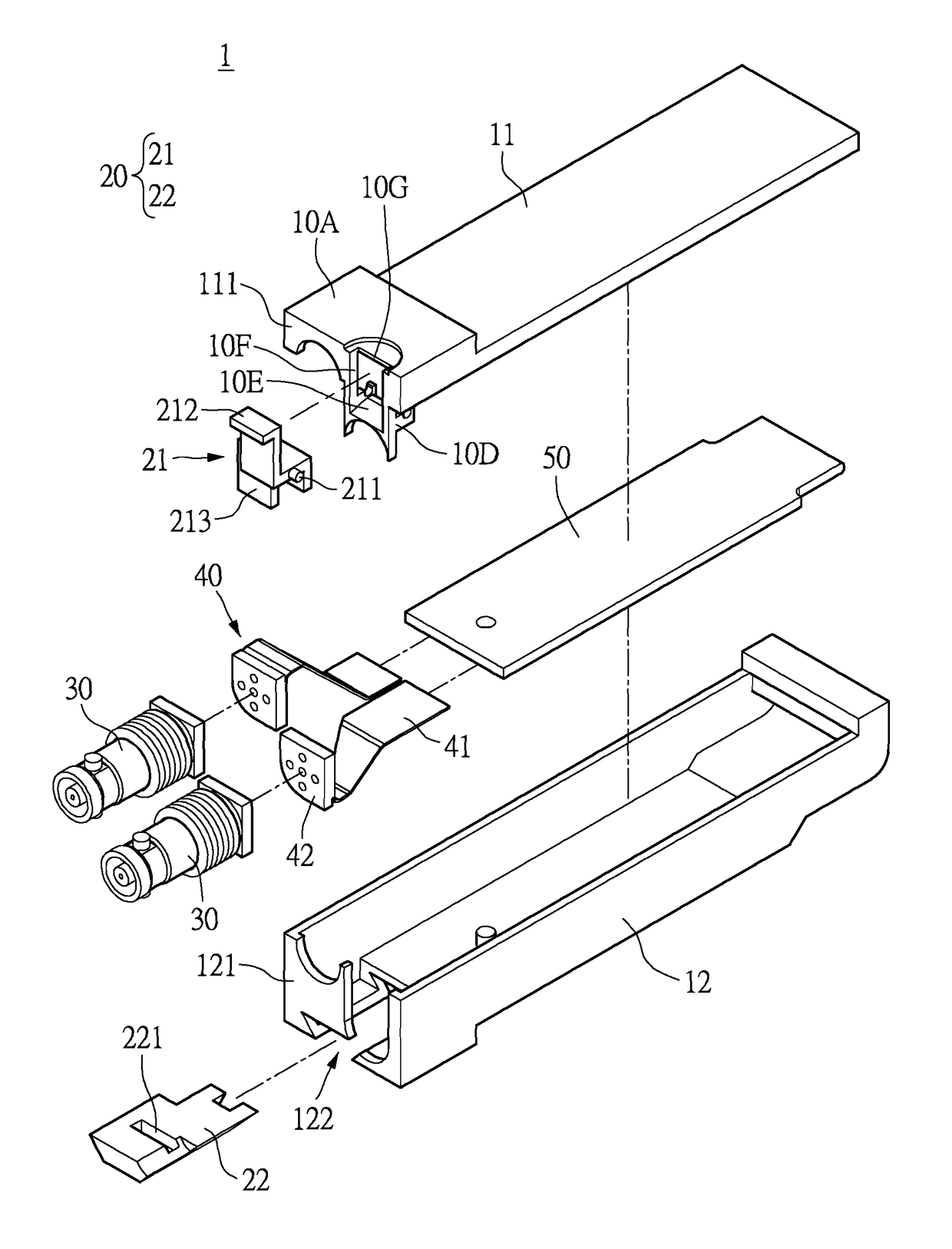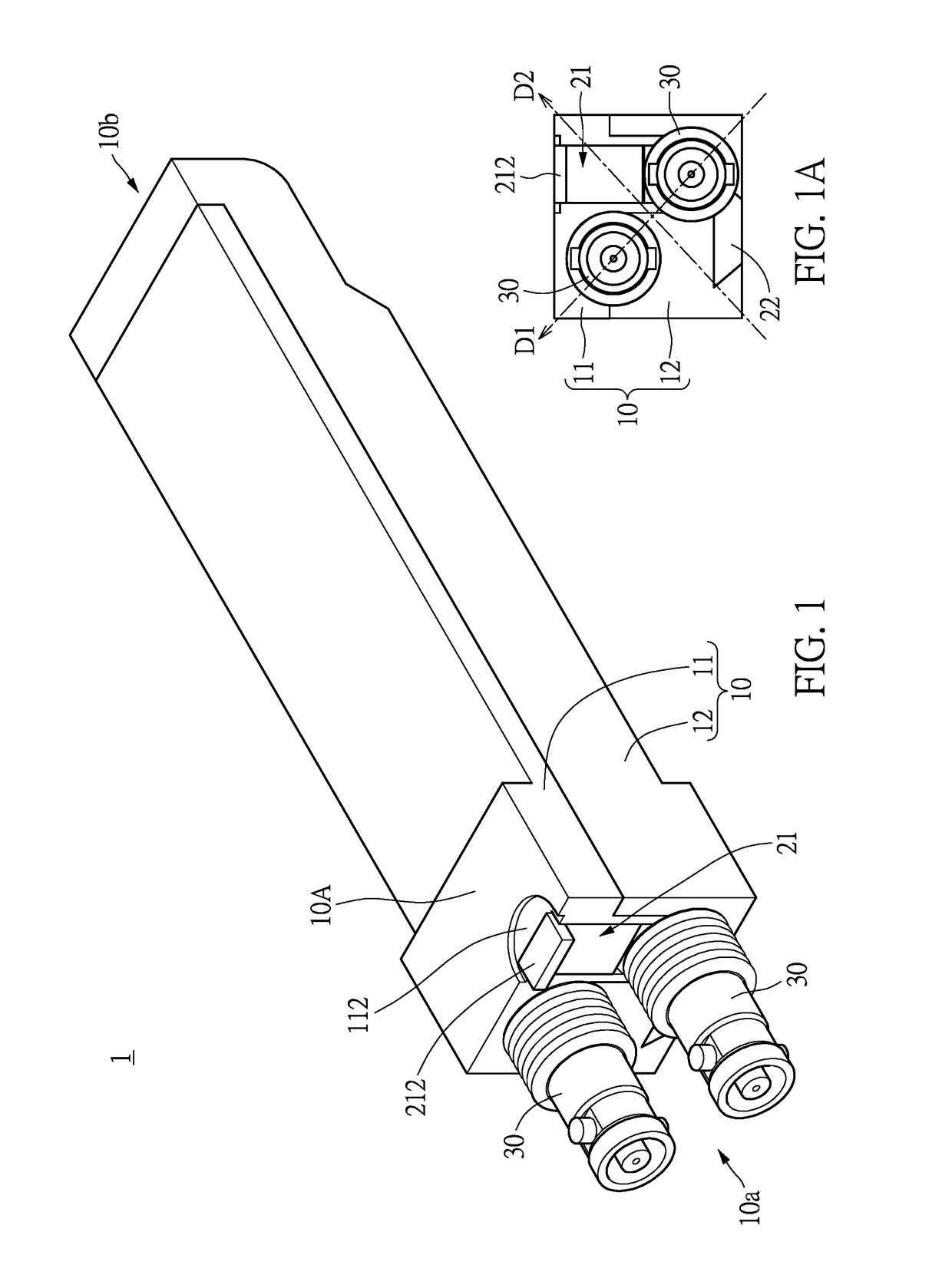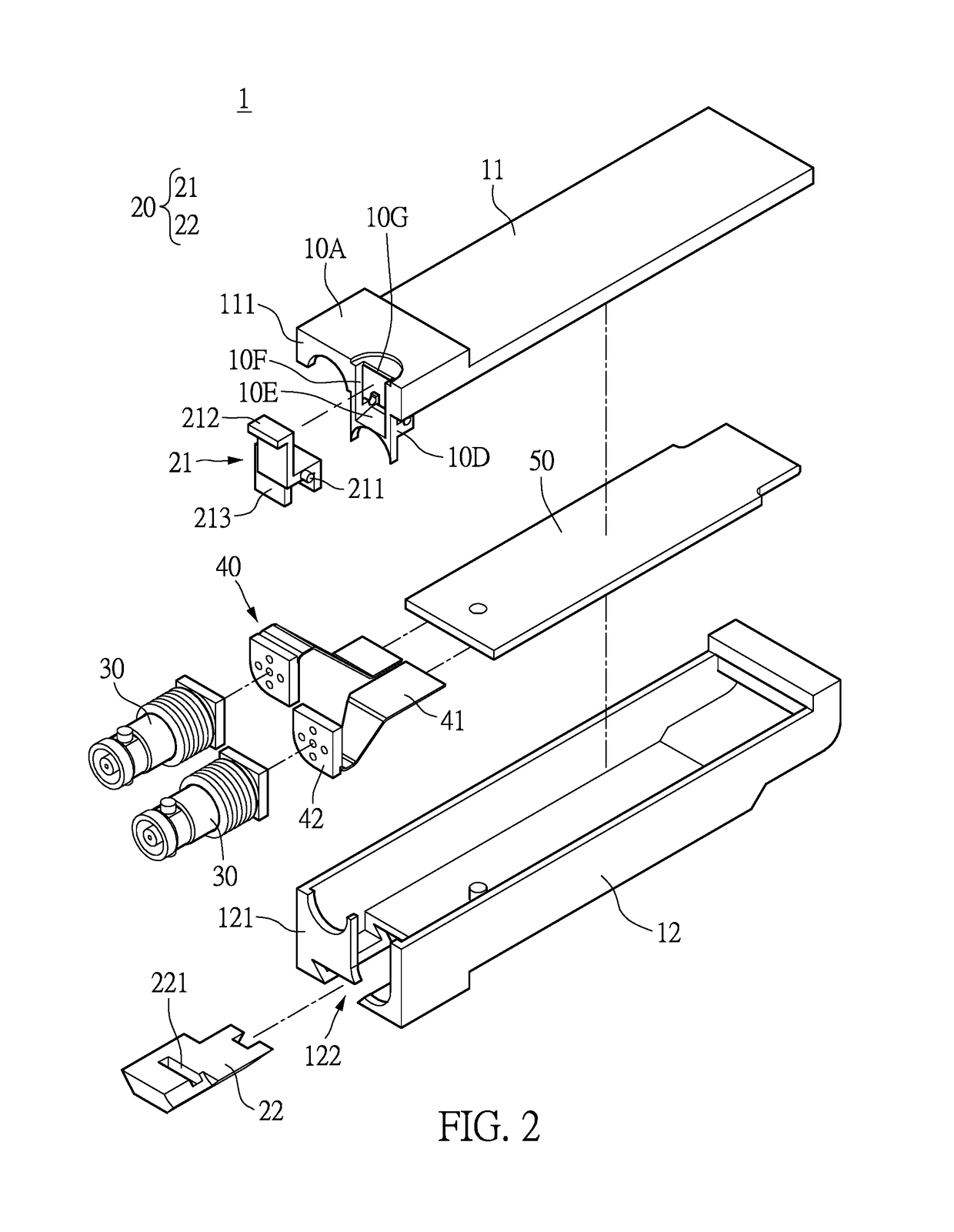Small form-factor pluggable transceiver
a transceiver and small form factor technology, applied in the field of pluggable transceivers, can solve problems such as the interference mismatch between the conventional sfp transceiver and the circuit board
- Summary
- Abstract
- Description
- Claims
- Application Information
AI Technical Summary
Benefits of technology
Problems solved by technology
Method used
Image
Examples
first embodiment
[0020]Reference is made to FIGS. 1 to 5, which illustrate a first embodiment of the present disclosure. The present embodiment discloses a small form-factor pluggable (SFP) transceiver 1, which can be electrically connected to two electrical signal wires and inserted into an electrical connection slot of an electronic apparatus, e.g., a switch or a router so that electrical signals from the two electrical signal wires can be converted by the SFP transceiver 1, and then be transmitted to the electronic apparatus through the SFP transceiver 1.
[0021]As shown in FIGS. 1 to 3, the SFP transceiver 1 includes a housing 10, an unlocking assembly 20, two electrical signal connectors 30, two flexible assemblies 40, and a circuit board 50. The housing 10 includes an upper cover 11 and a lower cover 12. The upper cover 11 and the lower cover 12 in the present embodiment are connected to each other so as to form the housing 10 defining an accommodating space SP therein, as shown in FIG. 4. The t...
second embodiment
[0032]Reference is made to FIGS. 6 to 9, which illustrate the SFP transceiver 1′ according to a second embodiment of the present disclosure. The SFP transceiver 1′ in the present embodiment includes a housing 10, an unlocking assembly 20, two electrical signal connectors 30, two flexible assemblies 40, and a circuit board 50. The following description discloses the difference between the present embodiment and the first embodiment.
[0033]In the present embodiment, the housing 10 is formed by assembling an upper cover 11, a lower cover 12, and a front plate 13 together, in which the front plate 13 is at the front end 10a of the housing 10. The upper cover 11, the lower cover 12, and the front plate 13 are three independent components, and the connection mechanisms therebetween can be determined respectively according to design requirements.
[0034]As shown in FIGS. 8 and 9, the front plate 13 includes a plastic layer 131 and a metallic layer 132, which respectively define two opposite m...
third embodiment
[0041]Reference is made to FIGS. 11 and 12, which illustrate the SFP transceiver 1″ according to a third embodiment of the present disclosure. The SFP transceiver 1″ in the present embodiment includes a housing 10, an unlocking assembly 20, two electrical signal connectors 30, two flexible assemblies 40, and a circuit board 50. The housing 10 in the present embodiment includes an upper cover 11, a lower cover 12, and a front plate 13′. The following description discloses the difference between the present embodiment and the first and second embodiments.
[0042]In the present embodiment, when the upper cover 11, the lower cover 12, and the front plate 13′ are assembled together, an outer surface of the front plate 13′ is coplanar with an end portion of the upper cover 11 and the lower cover 12, which are arranged around the outer surface of the front plate 13′. The front plate 13′ of the present embodiment is substantially identical to that of the second embodiment. For example, the fr...
PUM
 Login to View More
Login to View More Abstract
Description
Claims
Application Information
 Login to View More
Login to View More - R&D
- Intellectual Property
- Life Sciences
- Materials
- Tech Scout
- Unparalleled Data Quality
- Higher Quality Content
- 60% Fewer Hallucinations
Browse by: Latest US Patents, China's latest patents, Technical Efficacy Thesaurus, Application Domain, Technology Topic, Popular Technical Reports.
© 2025 PatSnap. All rights reserved.Legal|Privacy policy|Modern Slavery Act Transparency Statement|Sitemap|About US| Contact US: help@patsnap.com



